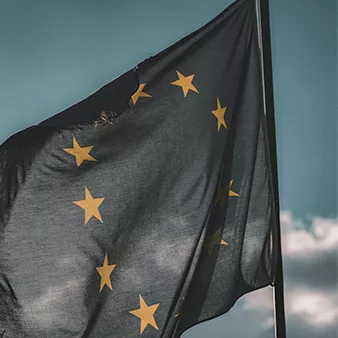Having control over your own data has become more important than ever. In this article, we go through recent changes, why it has become more important, and what steps you can take to protect your data.
Do you have complete control over who has access to your organization’s data? If so, then great! You may go and enjoy a celebratory coffee. However, even if you followed the GDPR guidelines to the letter a few years ago, the world is constantly changing at an increasing pace. We find ourselves in a different place today, and the topic of data sovereignty has re-emerged quicker than many of us could foresee. Therefore, maintaining control over your data is not just a simple checkbox; it is an ongoing process.
What can organizations do to increase their data sovereignty?
For European organizations, there is an upside already. Much of the “what, how, and where” of data protection was a massive project around the implementation of GDPR. Adding the increased cybersecurity requirements implemented around NIS2, DORA, and similar regulations in the European Union means that a lot of the work surrounding your organization’s data sovereignty should already be in place. Adapting and updating your existing policies to bring your data closer to home is a significantly smaller task than building the entire structure from the ground up.
At the same time, if you want to start preparing for a return to on-premises in one way or another, or to establish a cloud exit strategy, you can do so without needing to change your entire infrastructure. Many organizations are heavily dependent on different parts of US cloud services. Switching to European cloud alternatives or on-premises options is both a significant undertaking and sometimes not even possible. However, having a plan in place that allows an organization to synchronize data across different parts is a great step if the need to switch to European cloud services or on-premises arises.
Choose a modern solution for peace of mind
Modern and flexible IAM and cybersecurity solutions allow you to implement, replace, combine, and synchronize all aspects of your identity fabric at your own pace. This means you can improve selected parts of your infrastructure without the burden of undertaking a massive project to implement an entirely new system. Additionally, it means you can synchronize data across multiple systems, making it easier to transition back to on-premises when the time is right.
If you are a European organization, selecting a Europe-based vendor for your cybersecurity needs also means that you are partnering with someone who understands and adheres to the same laws and regulations as you. This makes it much easier to adapt to changes, as you are both operating in the same environment.
Lastly, bringing and keeping your data close to home for better control does not mean locking it up in a vault and burying the key. Modern on-premises solutions make access to local data and services just as easy as any cloud service, while allowing you to control everything from access to security levels.
Resources Learn more about our solutions, us, and how we can help you.
Support Get help with our products and solutions.







































